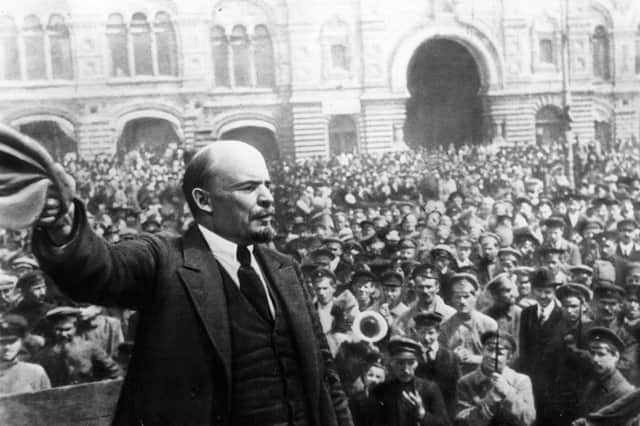Book review: The Lenin Plot, by Barnes Carr


I have read this book and am writing this review at a time of great tumult in the world, and not only during Remembrance week, but in the year we mark the centenary of the Tomb of the Unknown Warrior at Westminster Abbey. Some estimates give two million as the number of Russian military and civilian deaths in the First World War, yet in Russia one will have to look very hard to find any memorials to those war dead. This is because the Revolution took place during that war: the war was arguably the main factor that led to the revolution, and one of Lenin’s first acts was to get Russia out of what he called a “capitalist war.”
The Tsarist regime had taken its empire into the war, and the Bolsheviks simply expunged the memory. But Russia out of the war alarmed the Allies: the Germans could turn all their military might West, and seek to exploit Russia politically and
Advertisement
Hide Adeconomically. Not only that, Lenin was keen to foment Marxist revolution in the West. Something had to be done.


Barnes Carr’s The Lenin Plot offers a new slant on what happened next. In British culture, the spying exploits in Russia by Sidney Reilly, Bruce Lockhart and even the writers Arthur Ransome and Somerset Maugham have become legendary, leading, it has been said, to Ian Fleming’s creation of James Bond, but Carr insists that we look carefully at what the United States did too.
In the early 1900s the Americans had begun to take a greater interest in Russia, extending their diplomatic presence in the country and developing some of their commercial representatives into a fledgling secret service. In 1918, US President Woodrow Wilson was appalled at the idea of a massive communist state across half the world, and was using his State Department intelligence resources to undermine Lenin. As a civil war began in Russia, Washington, London and Paris worked to ally themselves with anti-Lenin forces – the Whites – and eventually send troops. Their ultimate goal was to defeat the Red Army, mount a coup against Lenin and then install their own Allied‑friendly dictator in Moscow as a means to get Russia back into the war.
Texas-based Barnes Carr’s interest in the Lenin plot began when he was a student in New Orleans and had a chance encounter with an elderly alumnus in the university library. The old scholar had known some American veterans, "the Polar Bears,” who had fought against Soviet Russia. “Go look ‘em up,” he said.
Barnes did, and after career in journalism, continuing his research all the while, The Lenin Plot is the result. Carr’s journalism is evident in his writing, for the book is detailed, investigative rather than historical and the narrative has verve and pace.
There is a contemporary feel, too. The American troops brought the "Spanish flu” of 1918 with them, which led to over two million deaths in Russia. There was mistrust between the governments and military leaderships of the British, French and American troops. The British had taken over command of the Allied troops, and there were some 80,000 of these foreigners on Russian soil by 1919. The Americans found the British leadership incompetent and miserly, often withholding food and medical supplies, and they also suspected that the British were tampering with messages going via the Atlantic undersea cables. There were mutinies amongst the White Russian forces, often with the soldiers going over to the Bolsheviks, which demoralised the allied troops; there were even small mutinies amongst soldiers, sailors and marines with the British, American and Canadian contingents.
Advertisement
Hide AdAllied morale was also affected, unsurprisingly, by the severity of the Russian winters and the inadequacy of the winter clothing that was issued. The British and the Americans finally withdrew their forces in January 1920, leaving Lenin and his Bolsheviks in control of what was by then the Soviet Union. Predictably, Barnes Carr is one of those who argues that the Cold War began in 1920, not 1945.
The Lenin Plot: The Untold Story of America’s Midnight War Against Russia, by Barnes Carr, Amberley Publishing, 352pp, £20
A message from the Editor:
Advertisement
Hide AdThank you for reading this story on our website. While I have your attention, I also have an important request to make of you.
The dramatic events of 2020 are having a major impact on many of our advertisers - and consequently the revenue we receive. We are now more reliant than ever on you taking out a digital subscription to support our journalism.
To subscribe to scotsman.com and enjoy unlimited access to Scottish news and information online and on our app, visit https://www.scotsman.com/subscriptions
Joy Yates, Editorial Director